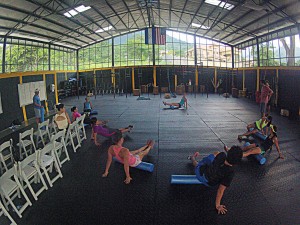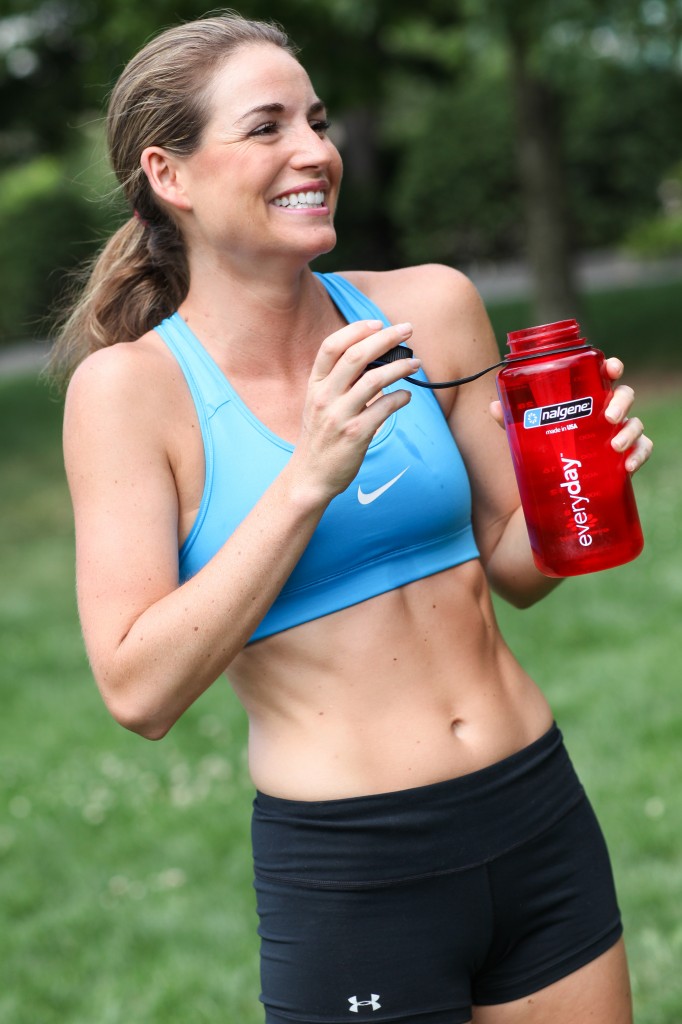Recently this coach did something new: she packed her bags, flew to San Pedro Sula, Honduras, and taught a 2-day running seminar. It was a wonderful weekend, and I met some passionate runners.
While I have been to Central America before (years ago I went to Costa Rica), I was nervous about a trip to San Pedro Sula. If you don’t know much about this city or Honduras, do a quick “google search” and you’ll understand why. I should also mention that I don’t currently speak any Spanish, making me that much more vulnerable in a dangerous city. However, after a lot of research, chatting with my host, Jorge Marcos, emailing friends who live in Honduras, and chatting with a fellow non-Spanish-speaking New Yorker who has taught seminars in San Pedro Sula multiple times, I decided I wanted to go. Thankfully, my host (and arranger of the program) took great care of me, and I notified the US of my travel plans – just to be safe.
While I never spent any time in the “dangerous” parts of town, security is huge. People hire security guards to watch their houses and tote rifles. Small children beg in the street, pressing their faces again the glass window while stopped at a traffic light. Wild dogs roam the street. Some of the athletes I taught run with a guard in a car, following them for safety. The safety and freedom I experience everyday in NYC is a completely different world from those in San Pedro Sula.
Before I get into the coaching, I will say this: What I saw and experienced was no different from what I had experienced in Costa Rica. In fact, the neighborhood where I stayed was definitely safer (the neighbor has an armed guard) and prettier (at the base of beautiful mountains) than the home I stayed in in San Jose, Costa Rica. Not to say that bad things don’t happen here in this neighborhood, but everyone I met at the stores, coffee shops and restaurants were friendly, smiling people. I never felt unsafe. Of course that doesn’t change the reality that San Pedro Sula is indeed, a dangerous city.
I should also mention that in my brief time there, it was beautiful. Lush mountains everywhere, often with clouds covering the peaks. I hear the beaches are beautiful, and hopefully some day will make it there. Honduras is so beautiful, and I very much hope this country improves economically.
 The seminar was held over a weekend at Cross Fit, SPS. All of the athletes were bilingual, so there wasn’t a language barrier with them. They were all smart, passionate runners, eager to learn more and to share their experiences with me and the rest of the group. I have to say, I was a bit nervous that my lack of Spanish would be an issue while teaching. While I certainly was helpless in terms of ordering food on my own, I was totally capable of talking about my favorite sport.
The seminar was held over a weekend at Cross Fit, SPS. All of the athletes were bilingual, so there wasn’t a language barrier with them. They were all smart, passionate runners, eager to learn more and to share their experiences with me and the rest of the group. I have to say, I was a bit nervous that my lack of Spanish would be an issue while teaching. While I certainly was helpless in terms of ordering food on my own, I was totally capable of talking about my favorite sport.
I must also confess that I typically work with individuals on their training, not teaching seminars in foreign countries. Was I going to be able to speak about running for 8 hours? Would I be clearly communicating? Would I confuse newbies? Would they lose focus? Honestly, I didn’t know exactly how it would go, though I was confident in my knowledge of the sport and knew I was walking into the seminar with information and a passion they would hopefully appreciate.
If I could teach seminars every week to groups of runners, I totally would. I enjoyed it so much. I loved hearing about their race goals, their previous experiences, and taking them out for a short run. I loved making them laugh as I shared some of my own experiences – especially the mistakes. The entire seminar was great.
So much thanks to the athletes in San Pedro Sula, Jorge, and the folks at CrossFit SPS for what was a truly great weekend.








